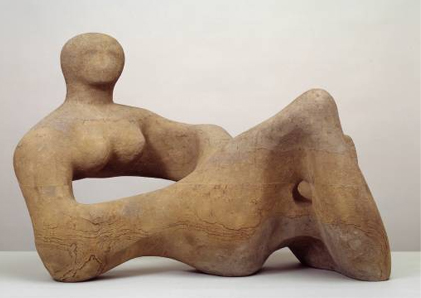1927: MARY Moore, huge, heavy hands clasped in her lap, sits and waits for Henry to finish his drawing. There's a hint of impatience in her expression - she fixes her son with a gaze that implies he'd better get on with it and no slacking - tempered by definite, proprietorial affection. Henry dwells in some detail on the face and hair; the rest of her - a craggy, considerable bulk swathed in a high-necked, sack-like dress - is accomplished in broad washes of pen and ink.
In Henry's eyes, Mary is both statue and - predicting most of his art - Woman as Landscape. Her shins, joined by taut drapery, are a precipitous climb, her lap a gentle rise. He follows the line of her arms and shoulders with almost topographical fidelity, less portraitist than cartographer, studying the lie of the land, capturing every irregularity of the terrain.
Later, Moore would declare that 'The sculpture which moves me most is full blooded and self-supporting. It is static and it is strong and vital, giving out something of the energy and vitality of great mountains.' The Artist's Mother - exhibit 55 of 239 in the Royal Academy's celebration of what would have been Moore's 90th birthday - meets all those criteria. She's the original Moore monument.
Moore didn't mind admitting he had 'a mother complex . . . She was to me the absolute stability, the whole thing in life that one knew was there for one's protection. If she went out, I'd be terrified she wouldn't return.' Even at its most abstract, the undulating roundness of his sculpture speaks of protection and nurture - a sluggish, monumental softness that was Moore's antidote to the hardness, the angularity, the rush and mechanisation of the century in which...

A Shelter from the Storm
20-09-1988

